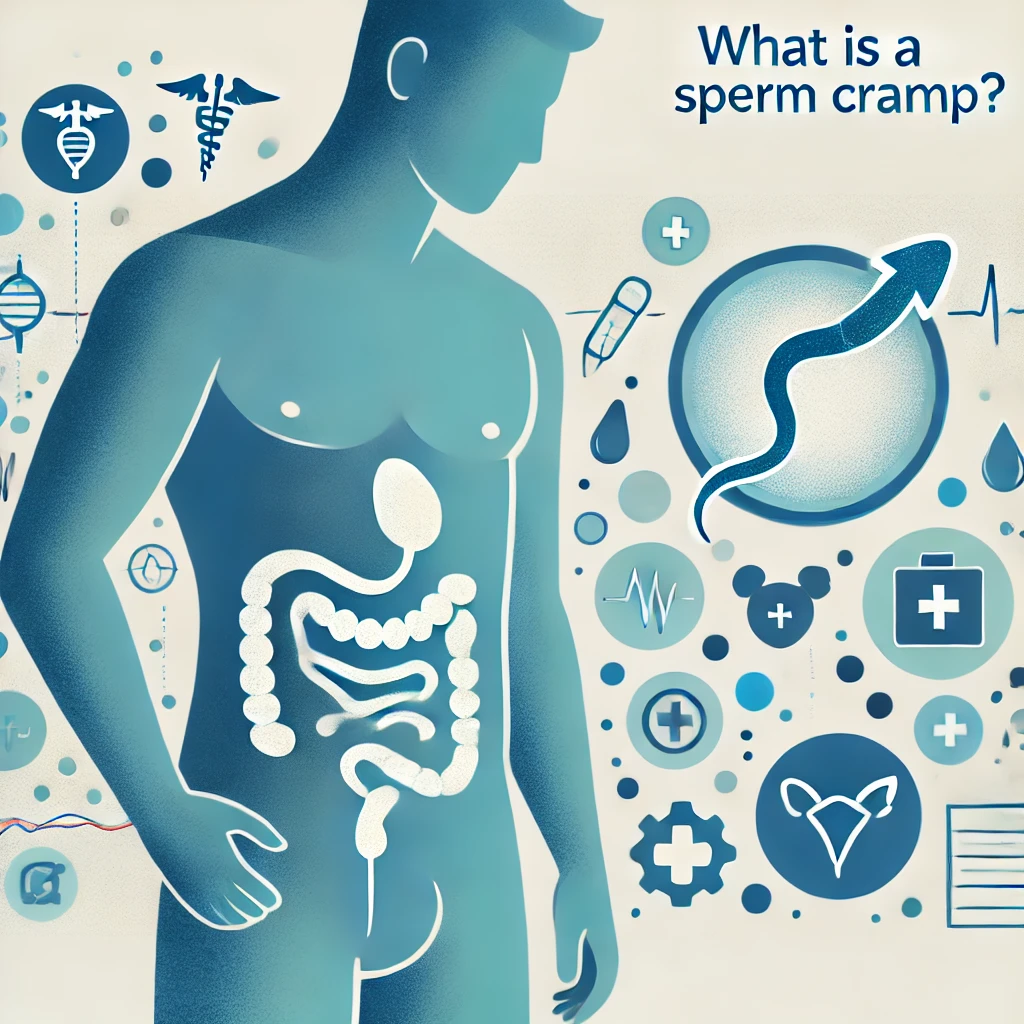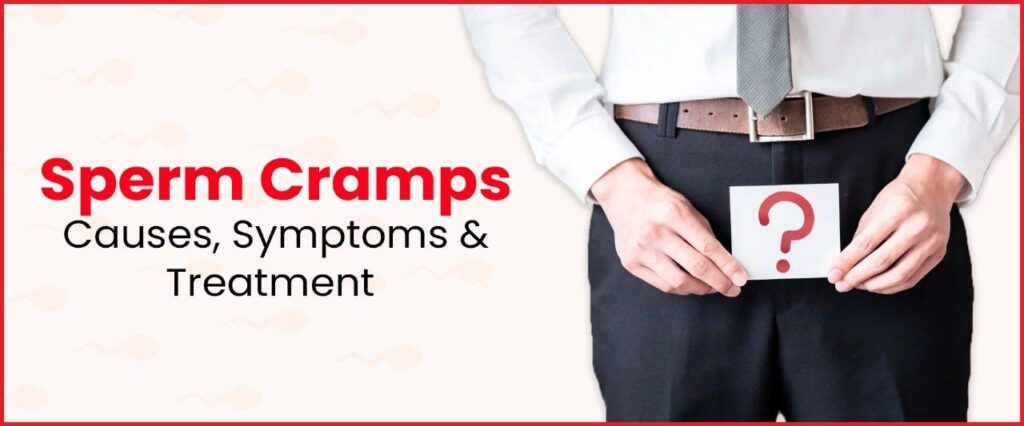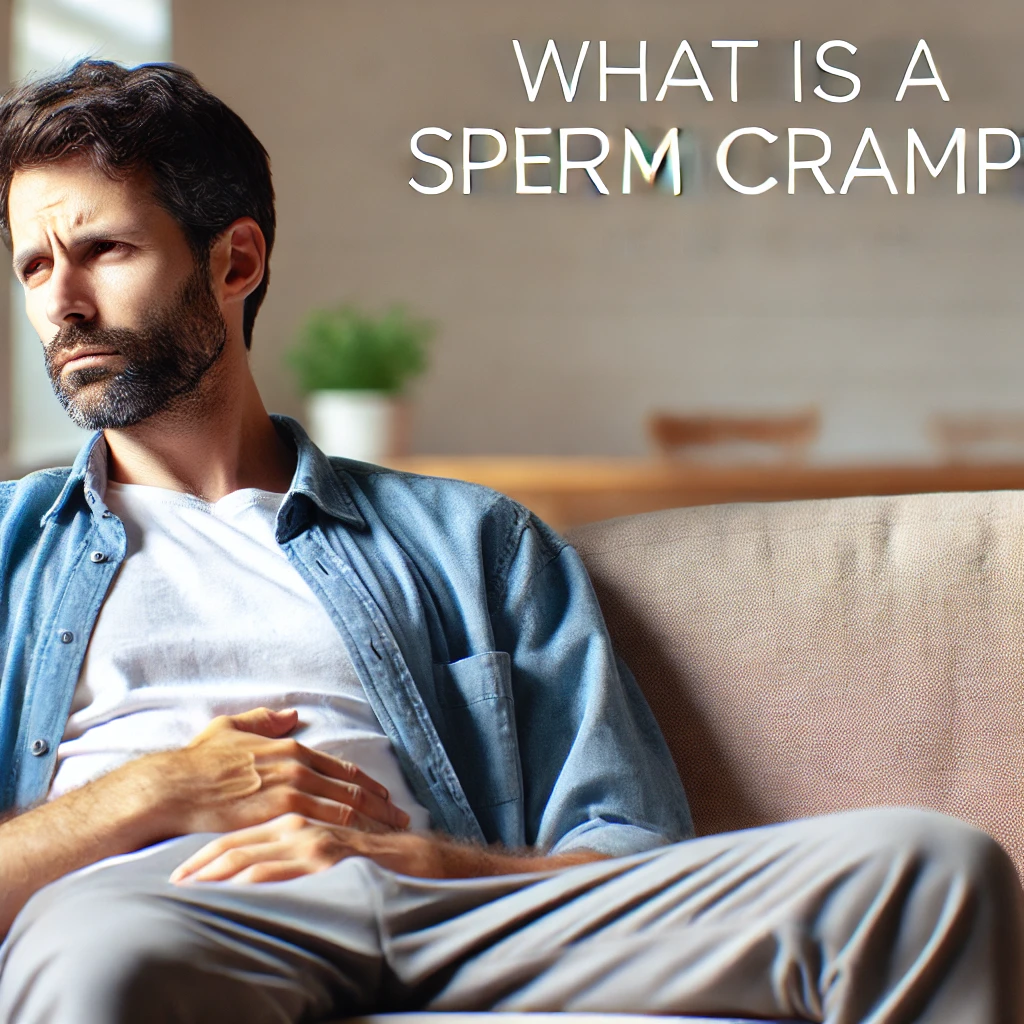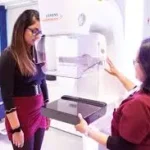Sperm cramps may sound unusual, but they are a real experience for some men. While not widely recognized in medical literature, sperm cramps refer to pelvic, lower abdominal, or testicular discomfort associated with ejaculation or sperm accumulation.
For some men, sperm cramps are mild and occasional, while others may experience more intense, persistent pain. Understanding what sperm cramps are, what causes them, how long they last, and how to relieve them is crucial for better reproductive health and peace of mind.
In this article, we will cover:
✔️ What is a sperm cramp?
✔️ Causes of sperm cramps
✔️ Common symptoms and affected areas
✔️ Duration and relief methods
✔️ When to seek medical attention
Also Read: Can Sperm Cause Abdominal Pain in Women
Are Sperm Cramps Real? Understanding the Basics

Yes, sperm cramps are real, even though they are not a medically classified condition. The term is commonly used to describe pain or discomfort in the pelvic, lower abdominal, or groin area that occurs due to:
🔹 Ejaculation-related muscle contractions
🔹 Sperm build-up and pressure
🔹 Prostate issues or infections
The severity of sperm cramps symptoms varies. Some men experience minor aches, while others feel sharp, stabbing pain.
If sperm cramps persist or worsen, it may indicate an underlying condition that requires medical attention.
Also Read: How to Confirm Whether Sperm Went Inside
What Causes Sperm Cramps? Common Reasons for Discomfort
1. Ejaculatory Muscle Spasms
During ejaculation, pelvic muscles contract to expel semen. If these muscles spasm or tighten excessively, they can cause cramping. This is a normal physiological response and usually subsides quickly.
2. Prostate Problems
The prostate gland plays a key role in ejaculation. If the prostate becomes inflamed or enlarged, it can cause pain during or after ejaculation, often perceived as a sperm cramp.
Common prostate-related causes include:
✔️ Prostatitis (prostate inflammation)
✔️ Benign prostatic hyperplasia (BPH)
✔️ Prostate infections (bacterial or non-bacterial)
3. Sperm Accumulation (Blue Balls Syndrome)
If sperm builds up in the epididymis without being released, it can create pressure and discomfort in the testicles and pelvic region. This is commonly referred to as “blue balls” and occurs when sexual arousal is not followed by ejaculation.
4. Urinary Tract Infections (UTIs) or Sexually Transmitted Infections (STIs)
Infections in the urinary or reproductive system can cause:
✔️ Inflammation and irritation
✔️ Burning sensation during urination or ejaculation
✔️ Pelvic or lower abdominal pain
If sperm cramps are accompanied by painful urination, unusual discharge, or fever, seek medical attention immediately.
5. Pelvic Floor Dysfunction
The pelvic floor muscles support the bladder, intestines, and reproductive organs. If these muscles become too tight, weak, or overactive, they can cause spasms and cramping during ejaculation.
6. Overuse or Strain of the Reproductive Muscles
Frequent ejaculation, vigorous sexual activity, or long periods of arousal without release can overwork the reproductive muscles, leading to temporary muscle cramps.
Sperm Cramps Symptoms: What Do They Feel Like?

The symptoms of sperm cramps vary based on their cause. Common descriptions include:
✔️ Mild to Moderate Pain – A dull, aching discomfort in the lower abdomen or pelvic area.
✔️ Sharp, Stabbing Sensations – Intense pain during or after ejaculation.
✔️ Tightness or Pressure – A feeling of muscle constriction in the groin.
✔️ Radiating Pain – Some men experience discomfort extending to the lower back, testicles, or inner thighs.
Where Do Sperm Cramps Hurt? Common Areas of Discomfort
Sperm cramps can cause pain in multiple areas, including:
🔹 Lower Abdomen – Around the bladder and reproductive organs.
🔹 Pelvic Region – Below the navel, near the prostate and seminal vesicles.
🔹 Groin Area – Pain that spreads to the inner thighs or testicles.
🔹 Lower Back – Some men experience referred pain in the back, especially with prostate-related issues.
How Long Do Sperm Cramps Last? Duration and Recovery
The duration of sperm cramps depends on the cause:
⏳ Short-Term Discomfort – Lasts a few seconds to a few minutes.
⏳ Moderate Pain – Lasts 10–30 minutes and may improve with rest.
⏳ Persistent Pain – Lasts several hours or days, often linked to infections or prostate issues.
If sperm cramps persist for hours or days, seek medical evaluation.
Is It Normal to Have Sperm Cramps? When to Be Concerned
Occasional mild sperm cramps are common and usually harmless. However, medical attention is needed if you experience:
⚠️ Severe, chronic, or increasing pain.
⚠️ Pain during urination or ejaculation.
⚠️ Swelling, fever, or unusual discharge.
⚠️ Frequent discomfort after sexual activity.
How to Stop Sperm Cramps: Effective Treatment & Prevention
If you experience sperm cramps, try these methods:
If you experience sperm cramps, you can take several proactive steps to reduce discomfort and prevent them from occurring in the future. Understanding the causes and making lifestyle changes can significantly improve your reproductive health and well-being. Here are the most effective ways to stop sperm cramps and prevent them from recurring.
1. Hydration and Diet: Key Nutrients for Reproductive Health
Staying well-hydrated and maintaining a nutrient-rich diet plays a crucial role in preventing sperm cramps and supporting healthy sperm production. Dehydration can lead to muscle cramps, including those in the pelvic region, so drinking plenty of water daily is essential.
🔹 Water Intake: Aim for at least 8-10 glasses of water per day to help flush out toxins, improve circulation, and prevent urinary tract infections, which can contribute to sperm cramp symptoms.
🔹 Essential Nutrients for Reproductive Health:
- Zinc: Supports sperm health, testosterone production, and prostate function. Foods high in zinc include oysters, beef, pumpkin seeds, and nuts.
- Magnesium: Helps relax muscles and prevent cramping. Found in spinach, almonds, bananas, and dark chocolate.
- Omega-3 Fatty Acids: Reduce inflammation and improve blood flow to reproductive organs. Found in salmon, flaxseeds, and walnuts.
- Vitamin D: Supports hormonal balance and muscle function. Get it from sunlight exposure, fortified dairy, or supplements.
A balanced diet that includes these nutrients can reduce the frequency of sperm cramps and enhance overall male reproductive health.
2. Pelvic Floor Exercises (Kegels): Strengthening Pelvic Muscles
Pelvic floor exercises are one of the most effective ways to manage and prevent sperm cramps caused by muscle spasms or pelvic floor dysfunction. Kegels specifically help strengthen the muscles involved in ejaculation and bladder control.
How to Perform Kegels for Sperm Cramp Relief
1️⃣ Identify the Right Muscles – The easiest way to locate your pelvic floor muscles is to stop urination midstream. These are the muscles you need to target.
2️⃣ Contract & Hold – Squeeze the pelvic muscles and hold for 5-10 seconds, then release.
3️⃣ Repeat – Perform 3 sets of 10-15 repetitions daily to strengthen pelvic support.
4️⃣ Breathe Normally – Avoid holding your breath; breathe deeply to promote relaxation.
Regularly doing pelvic floor exercises can improve muscle function, reduce cramping, and enhance ejaculatory control, making it easier to prevent sperm cramps in males.
3. Apply Heat or Cold Therapy: Reducing Muscle Tension
Applying heat or cold therapy is a simple and effective way to relieve sperm cramps naturally. Both methods work by reducing inflammation, improving blood circulation, and relaxing muscle tension.
🔹 Heat Therapy for Sperm Cramps Relief
- Use a heating pad or warm compress on the lower abdomen or pelvic region.
- Heat relaxes tight muscles and eases spasms, reducing sperm cramps symptoms.
- Apply for 15-20 minutes at a time for the best results.
🔹 Cold Therapy for Sperm Cramp Treatment
- Place an ice pack (wrapped in a cloth) over the affected area.
- Cold therapy reduces inflammation and numbs pain, especially if the cramps are caused by prostate swelling.
- Apply for 10-15 minutes at a time and repeat as needed.
Alternating between heat and cold therapy can be beneficial in soothing sperm cramps and improving blood circulation.
4. Over-the-Counter Pain Relievers: Temporary Pain Management
If sperm cramps cause moderate discomfort, over-the-counter (OTC) pain relievers can be used for temporary relief. However, they should not be a long-term solution unless recommended by a doctor.
🔹 Common Pain Relievers for Sperm Cramps:
✔️ Ibuprofen (Advil, Motrin) – Reduces pain and inflammation associated with muscle spasms and prostate discomfort.
✔️ Acetaminophen (Tylenol) – Helps with mild to moderate pain relief but does not reduce inflammation.
✔️ Aspirin – Can reduce pelvic muscle tension and pain after ejaculation.
🔹 When to Use OTC Medications:
- If sperm cramps are mild and occasional.
- When pain disrupts daily activities or sleep.
- If discomfort does not improve with hydration, diet, or exercise.
⚠️ Caution: If you experience severe or persistent sperm cramps, consult a healthcare professional before relying on medication.
5. Regular Ejaculation: Preventing Sperm Accumulation Pain
One of the simplest ways to prevent sperm cramps is to maintain a healthy ejaculation frequency. If sperm builds up in the epididymis without being released, it can increase pressure, causing discomfort and cramping.
✔️ Frequent ejaculation reduces sperm accumulation pain.
✔️ Helps clear out old sperm and fluids, reducing pelvic congestion.
✔️ Improves blood flow to reproductive organs, preventing muscle tightness.
However, excessive ejaculation without proper hydration or nutrient replenishment can lead to temporary fatigue and soreness. It’s best to maintain a balanced frequency that suits your body’s natural rhythm.
FAQs About Sperm Cramps
Conclusion
Sperm cramps are real and can be caused by muscle spasms, prostate conditions, sperm accumulation, or infections. While usually harmless, persistent or severe pain should not be ignored.
By understanding what sperm cramps are, their causes, symptoms, and treatments, men can take proactive steps to manage and prevent discomfort.
If sperm cramps persist, worsen, or interfere with daily life, seeking medical advice is essential for proper diagnosis and treatment.
Disclaimer: The content on Wellness Derive is for informational purposes only and not a substitute for professional medical advice, diagnosis, or treatment. Always consult a healthcare provider for medical concerns.



